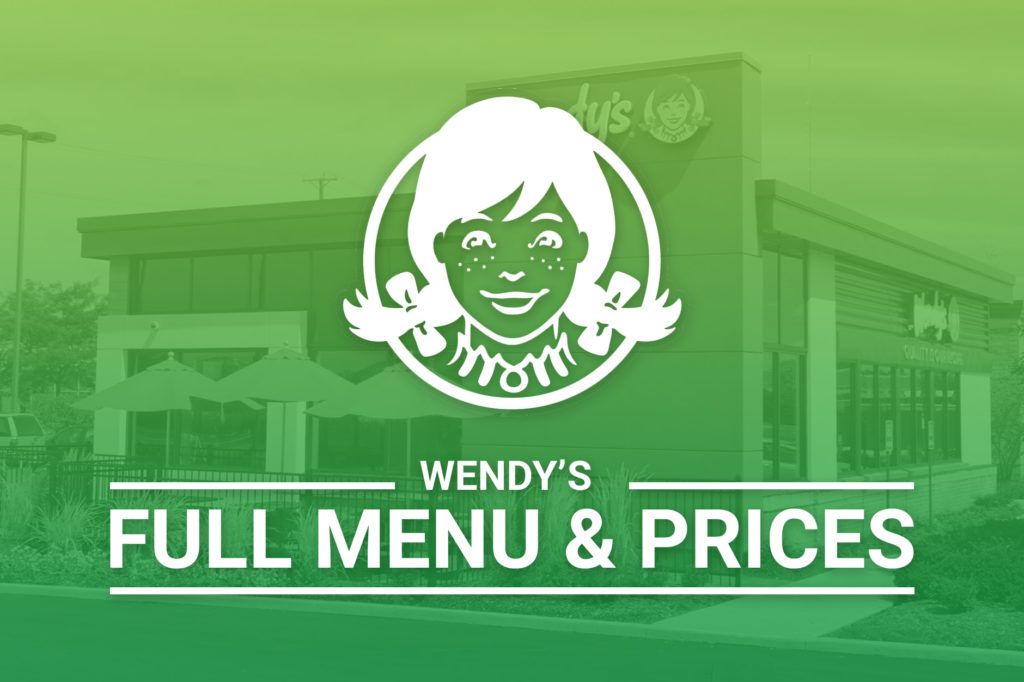
Wendy’s Full Menu & Prices
If you’re in the mood for a quick meal, then you might make a stop at Wendy’s. The fast food restaurant is known for its

If you’re in the mood for a quick meal, then you might make a stop at Wendy’s. The fast food restaurant is known for its
Bars can be a great investment. With a liquor license and location, you can open up a brew pub, wine bar, trendy lounge, or an
Most Americans are now familiar with bubble tea – also referred to as boba – the sweet drink that has become popular throughout the nation.
If you’re in the mood for a sandwich, chances are good that you’ll stop at a local Subway. Since the 1960s, this submarine chain has
Most Americans have visited a McDonald’s at least once in their lives – if not on a regular basis! McDonald’s is a classic American fast
No matter where you live, chances are good that you have a Domino’s nearby – or within an easy drive. As the largest pizza franchise
If you want to get involved in the restaurant business but don’t want to be tied to a physical location, a food truck may be
Bubble tea has become incredibly popular across the United States. Once limited to big cities, you can now find boba tea stores in small towns
If you have ever driven past a Chick-fil-A around lunch or dinner time, you probably saw lines snaking through the parking lot – and even
If you live on the West Coast, you’ve probably stopped at a Jack in the Box. The chain restaurant is based in California and is
If you’re in the mood for a quick meal, then you might make a stop at Wendy’s. The fast food restaurant is known for its
Bars can be a great investment. With a liquor license and location, you can open up a brew pub, wine bar, trendy lounge, or an
Most Americans are now familiar with bubble tea – also referred to as boba – the sweet drink that has become popular throughout the nation.
If you’re in the mood for a sandwich, chances are good that you’ll stop at a local Subway. Since the 1960s, this submarine chain has
 Vibe Coffee Co.2023-08-09Budget Branders is the best! It was our first time ordering custom cups, so we had A LOT of questions. But Jamie addressed everything in a very timely fashion. Tons of proofs to make sure everything was perfect. 100% will be returning for the next order.
Vibe Coffee Co.2023-08-09Budget Branders is the best! It was our first time ordering custom cups, so we had A LOT of questions. But Jamie addressed everything in a very timely fashion. Tons of proofs to make sure everything was perfect. 100% will be returning for the next order. Lisa Owings2023-08-07I'm so happy I found this company! The level of customer service is top-notch. Jamie has been absolutely incredible to work with. She has always been quick to reply to any question I've had and always follows up with information re: my orders. I highly recommend Budget Branders!
Lisa Owings2023-08-07I'm so happy I found this company! The level of customer service is top-notch. Jamie has been absolutely incredible to work with. She has always been quick to reply to any question I've had and always follows up with information re: my orders. I highly recommend Budget Branders! Stephanie Rodriguez2023-07-06we've had the pleasure to work with Jamie with our own personal labels, and she's been so one top of all orders, so helpful and so knowledgable. We highly recommend this company. We'll be life long customers.
Stephanie Rodriguez2023-07-06we've had the pleasure to work with Jamie with our own personal labels, and she's been so one top of all orders, so helpful and so knowledgable. We highly recommend this company. We'll be life long customers. Josh Mente2023-07-06We couldnt be happier with Jamie and Budget Branders. From price to service they are the best. Highly recommend!!
Josh Mente2023-07-06We couldnt be happier with Jamie and Budget Branders. From price to service they are the best. Highly recommend!! Mr Rodriguez2023-05-12Amazing quality of the products, fast shipping and the best customer service I had ever
Mr Rodriguez2023-05-12Amazing quality of the products, fast shipping and the best customer service I had ever Martha Clayton2022-11-03Budget Branders has been the absolute best to work with! Low prices, friendly service, great product. Ramsey is always quick to to reply to emails. We love our cups!
Martha Clayton2022-11-03Budget Branders has been the absolute best to work with! Low prices, friendly service, great product. Ramsey is always quick to to reply to emails. We love our cups! Derric Curran2022-10-28Perfect products. Fast response and the best customer service possible. It does take some time to get final product but is worth the wait. You will not find a better company to work with!!
Derric Curran2022-10-28Perfect products. Fast response and the best customer service possible. It does take some time to get final product but is worth the wait. You will not find a better company to work with!! Jacob Kaufman2022-10-25We found Budget Branders from a Google search after having endless problems with Webstaurant Store. I was a little apprehensive at first because their pricing seemed too good to be true, but now that our cups have arrived, I can assure anyone with similar thoughts that the product quality is excellent! When comparing them to the Solo brand cups we used to buy, I'd say that these from Budget Branders have higher quality printing and better clarity. Jamie was really great to work with and answered all my questions right away. She sent me sample photos of the product I was interested in, and sent a proof before finalizing my order to make sure the logo sizing and color was what we were hoping for. Jamie was also very honest about the extended 8-12 week lead time due to current supply chain issues, and I am happy to report that the cups arrived exactly 9 weeks after we placed our order (sooner than I was expecting!). We use 3 sizes of clear cups at our venue, and I know that when we run low on any of them, I'll be contacting Jamie again to buy more from Budget Branders!
Jacob Kaufman2022-10-25We found Budget Branders from a Google search after having endless problems with Webstaurant Store. I was a little apprehensive at first because their pricing seemed too good to be true, but now that our cups have arrived, I can assure anyone with similar thoughts that the product quality is excellent! When comparing them to the Solo brand cups we used to buy, I'd say that these from Budget Branders have higher quality printing and better clarity. Jamie was really great to work with and answered all my questions right away. She sent me sample photos of the product I was interested in, and sent a proof before finalizing my order to make sure the logo sizing and color was what we were hoping for. Jamie was also very honest about the extended 8-12 week lead time due to current supply chain issues, and I am happy to report that the cups arrived exactly 9 weeks after we placed our order (sooner than I was expecting!). We use 3 sizes of clear cups at our venue, and I know that when we run low on any of them, I'll be contacting Jamie again to buy more from Budget Branders! LEA CUASAY2022-10-23Big J Boba House from Canada are one happy customer of Budget Branders. Jamie did above and excellent service with her job., though it's a long wait for the shipping but it's all worth it.!
LEA CUASAY2022-10-23Big J Boba House from Canada are one happy customer of Budget Branders. Jamie did above and excellent service with her job., though it's a long wait for the shipping but it's all worth it.! Christopher Johansen2022-09-07Jamie and the rest of the Budget Branders team came through for us when we were in a real bind. The quality of the cups is great, the custom printing is perfect, and the product arrived in good condition. Top-shelf customer service, follow-through, and attention to detail has brought us back for more and I suggest the company to anyone that has a need for printed packaging.
Christopher Johansen2022-09-07Jamie and the rest of the Budget Branders team came through for us when we were in a real bind. The quality of the cups is great, the custom printing is perfect, and the product arrived in good condition. Top-shelf customer service, follow-through, and attention to detail has brought us back for more and I suggest the company to anyone that has a need for printed packaging.
Contact Us
Call 888-373-4880
72 W. 64th St.
STE 200
Holland, MI 49426
Support Hours
Chat Hours: 10AM-8PM EST (Monday-Friday)
Phone Hours: 10AM-8PM EST (Monday-Friday)
© 2024. Budget Branders. All Rights Reserved